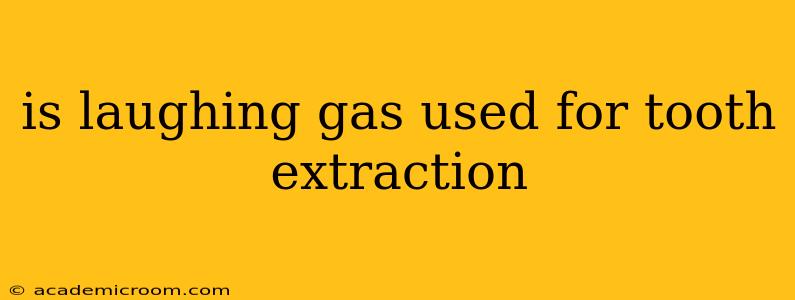Laughing gas, or nitrous oxide, has been a staple in dentistry for decades, playing a significant role in making dental procedures, including tooth extractions, more comfortable for patients. But is it always used? Let's explore its role and answer some frequently asked questions.
What is Laughing Gas (Nitrous Oxide)?
Nitrous oxide is a colorless, odorless gas with mild sweet-smelling properties. In dentistry, it's mixed with oxygen and inhaled through a small mask placed over the nose. It's a mild sedative that reduces anxiety and pain perception, helping patients relax during procedures. The effects are relatively quick-acting and wear off quickly after the mask is removed. Importantly, it doesn't cause you to completely lose consciousness.
How is Laughing Gas Used During Tooth Extraction?
During a tooth extraction, the dentist will administer nitrous oxide before the procedure begins. The patient breathes in the gas mixture, and within minutes, they begin to feel relaxed and less anxious. The level of sedation can be adjusted based on the patient's needs and the complexity of the extraction. The dentist carefully monitors the patient's vital signs throughout the procedure. Once the extraction is complete, the nitrous oxide is gradually turned off, and the patient is given time to recover before leaving the office.
Is Laughing Gas Always Used for Tooth Extraction?
No, laughing gas isn't always used for tooth extraction. Its use depends on several factors, including:
- Patient preference: Some patients prefer not to use any sedation at all, while others find that laughing gas helps them relax significantly.
- Type of extraction: Simple extractions often don't require sedation, while more complex extractions or those involving impacted teeth might benefit from nitrous oxide or other forms of sedation.
- Patient's medical history: Patients with certain medical conditions might not be suitable candidates for nitrous oxide.
- Dentist's judgment: The dentist ultimately decides whether or not to use laughing gas based on the patient's individual circumstances and the procedure's complexity.
What are the Alternatives to Laughing Gas for Tooth Extraction?
Several alternatives exist for managing anxiety and pain during tooth extraction, including:
- Local anesthesia: This is the most common method, numbing the area around the tooth to eliminate pain during the procedure.
- Oral sedation: This involves taking a pill before the procedure to induce relaxation and reduce anxiety.
- IV sedation: This involves administering sedatives through an intravenous line, providing deeper sedation and pain relief.
- General anesthesia: This involves completely losing consciousness during the procedure. This is typically reserved for complex cases.
Does Laughing Gas Have Side Effects?
While generally safe, nitrous oxide can have some side effects, though these are usually mild and temporary. These can include:
- Nausea or vomiting: This is uncommon but can occur, especially if the patient has an empty stomach.
- Dizziness or lightheadedness: This is usually temporary and resolves quickly after the procedure.
- Headache: This is less common but can occur in some individuals.
It's crucial to discuss any concerns about side effects with your dentist before the procedure.
Is Laughing Gas Safe During Pregnancy?
The safety of nitrous oxide during pregnancy is a subject of ongoing research and debate. While small amounts might not pose significant risks, many dentists prefer to avoid it altogether during pregnancy due to the potential for unknown long-term effects on the developing fetus. It’s essential to discuss this with your dentist and obstetrician before undergoing any dental procedure.
How Long Does it Take for the Effects of Laughing Gas to Wear Off?
The effects of laughing gas usually wear off within minutes of removing the mask. However, some patients might feel slightly groggy or lightheaded for a short time afterward. It's essential to have someone drive you home after the procedure, as your reflexes and coordination might be slightly impaired.
In conclusion, while laughing gas can significantly improve the comfort and experience of a tooth extraction for many patients, it's not a universally applied technique. The decision to use nitrous oxide is a collaborative one between the patient and the dentist, based on individual needs and the specific details of the procedure. Always communicate openly with your dentist to discuss your options and alleviate any concerns you may have.
